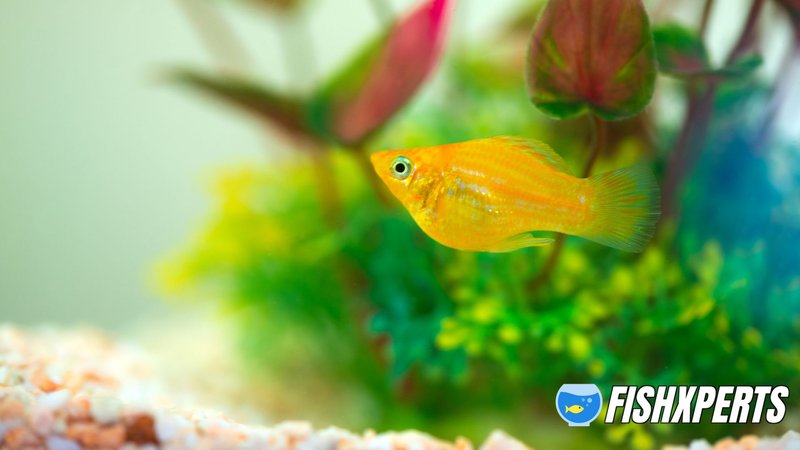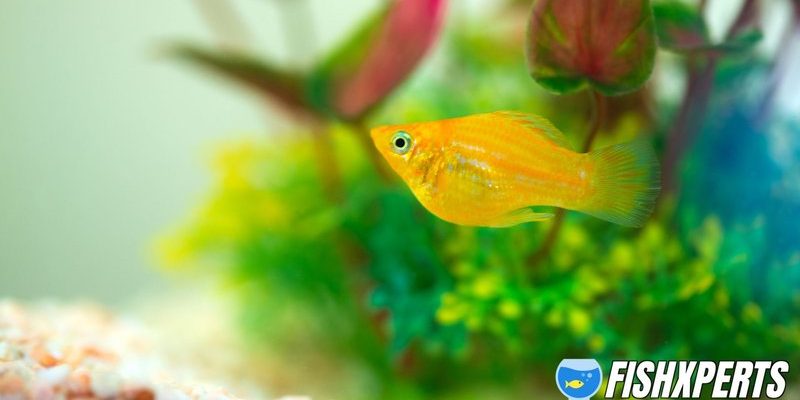
Mollies are part of the Poecilia family, which also includes guppies and platies. They come in various colors and patterns, which makes them a visual treat for any aquarium. Plus, they’re generally easy to care for, which is why they’re perfect for newbies. That said, they still have their needs, and being a great aquarist is all about understanding those. So grab your favorite beverage, and let’s explore how to make the water just right for these charming little fish!
Choosing the Right Aquarium Size
When it comes to picking the perfect home for your mollies, size matters. You might be wondering, “How big should my aquarium be?” Generally, a tank that holds at least 20 gallons is a smart choice. Mollies love to swim and explore, and giving them space helps them flourish. A larger tank is also easier to maintain, as it allows for a more stable environment.
Think of it this way: Picture a cozy studio apartment versus a spacious house. While both can be homey, the spacious house gives you more room to breathe and move around. In this case, a larger tank means less stress for your fish and less chance of fluctuating water conditions. If you’re feeling adventurous, a community tank with other compatible fish can make things even more exciting—just be sure to choose tank mates wisely!
Water Conditions and Parameters
Mollies thrive in certain water conditions, and keeping those parameters stable is crucial. Here’s what you need to keep in mind:
- Temperature: Aim for a range between 74°F and 82°F. A heater can help maintain this temperature.
- pH Level: Mollies prefer a slight alkaline environment, so a pH around 7.5 to 8.5 is ideal. You can test the water with easy-to-use strips or kits.
- Hardness: These fish like harder water, ideally around 10-30 dGH. If your water is too soft, consider adding mineral supplements or using a water conditioner.
Here’s the thing: even minor changes in water conditions can stress your mollies, so regular testing is key. And if you’re ever in doubt, remember that consistency is your friend. Sudden shifts can be detrimental, so make any changes gradually.
Feeding Your Molly Fish
Feeding your mollies might feel straightforward, but there’s a bit more to it than just tossing pellets into the tank. They’re omnivores, which means they enjoy a balanced diet of both plant and animal matter. Quality flakes or pellets specifically formulated for freshwater fish are great staples. Just make sure they’re rich in nutrients.
Additionally, here are some options to mix things up:
- Vegetables: Blanched peas or spinach can be a fun treat for your mollies. They love nibbling on greens!
- Frozen or Live Foods: Consider treats like brine shrimp or daphnia occasionally. They’ll appreciate the variety.
- Feeding Frequency: Aim to feed them two to three times a day, giving only as much food as they can consume in a couple of minutes.
Honestly, keeping their diet diverse not only makes mealtime exciting but also promotes their health and vibrant colors.
Aquarium Decor and Plants
Now, let’s talk about the fun part: decorating your aquarium! Mollies are active swimmers, so providing plenty of space is important. But don’t forget about adding hiding spots and plants for enrichment. Live or silk plants are great for this, as they create a natural environment and provide places for your fish to explore and hide.
Another idea is to use smooth rocks or driftwood to create nooks and crannies. Just be sure to avoid sharp edges that might hurt your mollies. You want them to feel safe and secure, like they’re swimming through a lush underwater jungle.
Tank Maintenance Routine
Caring for mollies also means committing to regular tank maintenance. Just like you wouldn’t let your room get too messy, your aquarium needs some tidying up too. Here’s a simple routine to follow:
- Weekly Water Changes: Change out about 10-20% of the water each week. This helps remove toxins and keeps the environment fresh.
- Filter Maintenance: Clean the filter monthly, but avoid using tap water; instead, rinse it with tank water to maintain beneficial bacteria.
- Monitor Water Parameters: Test your water weekly. Keep an eye on pH, ammonia, nitrites, and nitrates to ensure everything’s in check.
This may sound like a lot, but once you get into a routine, it becomes second nature. Plus, keeping up with maintenance means healthier fish and a clearer tank!
Common Health Issues and Signs of Stress
Even with the best care, mollies can face health challenges. You might be wondering how to spot these issues early on. Here are some common signs to keep an eye out for:
- Fuzzy Growths: This could be a sign of fungus or bacterial infection. Acting quickly is key.
- Changes in Behavior: If your mollies are hiding more than usual or swimming erratically, it could be stress or illness.
- Faded Colors: Healthy mollies are usually vibrant. If they start looking dull, it could indicate water quality problems or illness.
If you notice any concerning symptoms, consider isolating the affected fish and consulting with a vet or aquatic specialist. Addressing health issues early can make a huge difference in your fish’s recovery.
Breeding Mollies in Your Aquarium
If you’re feeling adventurous and ready to take things to the next level, breeding your mollies can be a rewarding experience. They’re livebearers, which means they give birth to live young instead of laying eggs. To start breeding, you’ll need both male and female mollies, ideally in a separate breeding tank to protect the fry from being eaten.
You can expect the female to give birth every 4-6 weeks, producing anywhere from 20 to 100 fry! Providing ample hiding spots and floating plants will help the tiny fry feel secure. They’re vulnerable, so keeping them in a separate tank until they grow a bit is usually a wise move.
Caring for a molly in a freshwater aquarium can turn into a delightful journey. With a little effort and understanding, you can create a thriving environment for these playful fish. Remember to focus on proper tank size, water conditions, diet, and regular maintenance. And if you ever feel overwhelmed, just take a deep breath and tackle things one step at a time.
By educating yourself and being attentive to your mollies’ needs, you’ll set the stage for a vibrant, lively aquarium filled with these charming fish. So go ahead—dive in, enjoy the process, and watch your mollies flourish!

